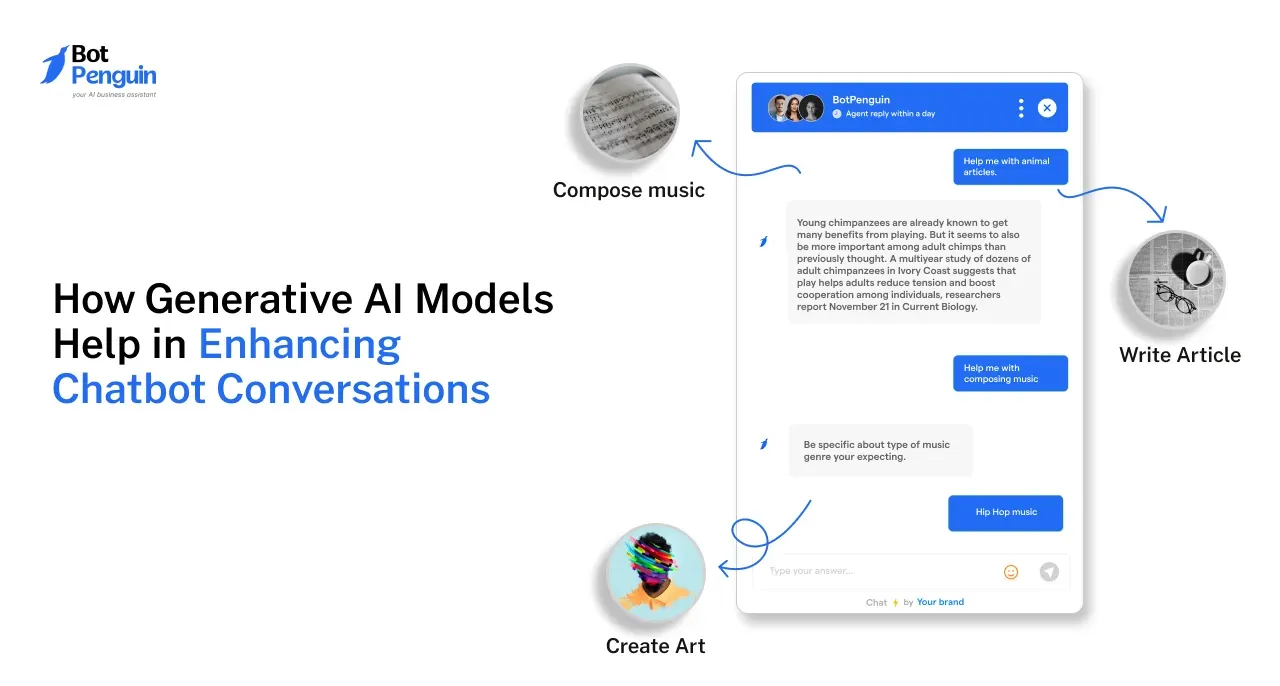Introduction
Imagine having a friendly, helpful assistant available 24/7 to answer questions, provide resources, and give feedback. That's what chatbots can do!
Chatbots make learning fun and interactive. They can help students with homework, explain tough concepts, and even quiz them to reinforce knowledge.
According to a report by MarketsandMarkets, the global chatbot market in the education sector is expected to grow from $248 million in 2022 to $703 million by 2027, at a CAGR of 23.2% during the forecast period.
Whether you're a student looking for extra help, a teacher wanting to enhance your classroom, or just curious about new tech in education, this guide is for you.
Let's explore how chatbots can make education smarter, easier, and more engaging. Get ready to dive into the exciting world of chatbots in education!
What is an Education Chatbot?
An education chatbot is a digital assistant designed to help in learning environments. It uses artificial intelligence to interact with users.
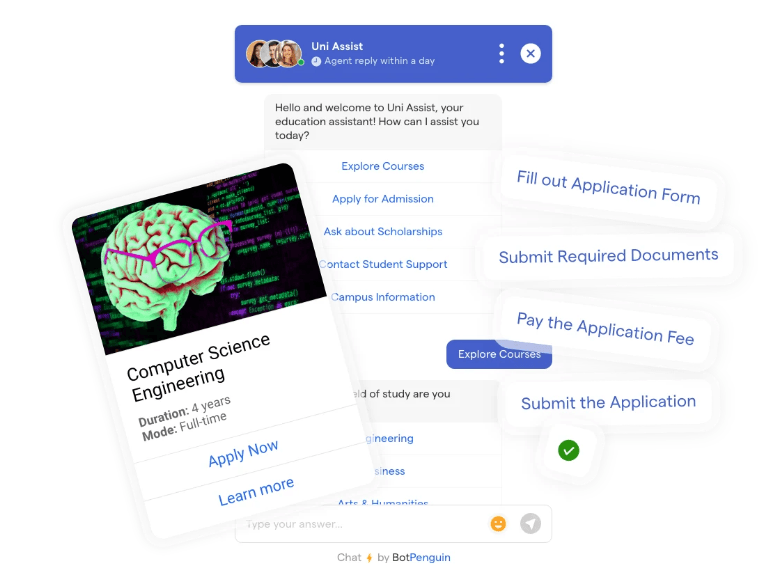
Students can ask questions and get quick answers. Teachers can use chatbots to manage tasks like grading and scheduling.
AI chatbots for education use natural language processing. This means they understand and respond in a human-like way. They are available anytime, making learning accessible 24/7.
Schools can use a free chatbot for education to enhance the learning experience without extra costs.
Benefits of Chatbots in Education
Chatbots are transforming education by offering a wide range of benefits of chatbots for education. They are making learning more accessible and teaching more efficient.
Let's explore how a chatbot for education can enhance the learning experience.
24/7 Availability
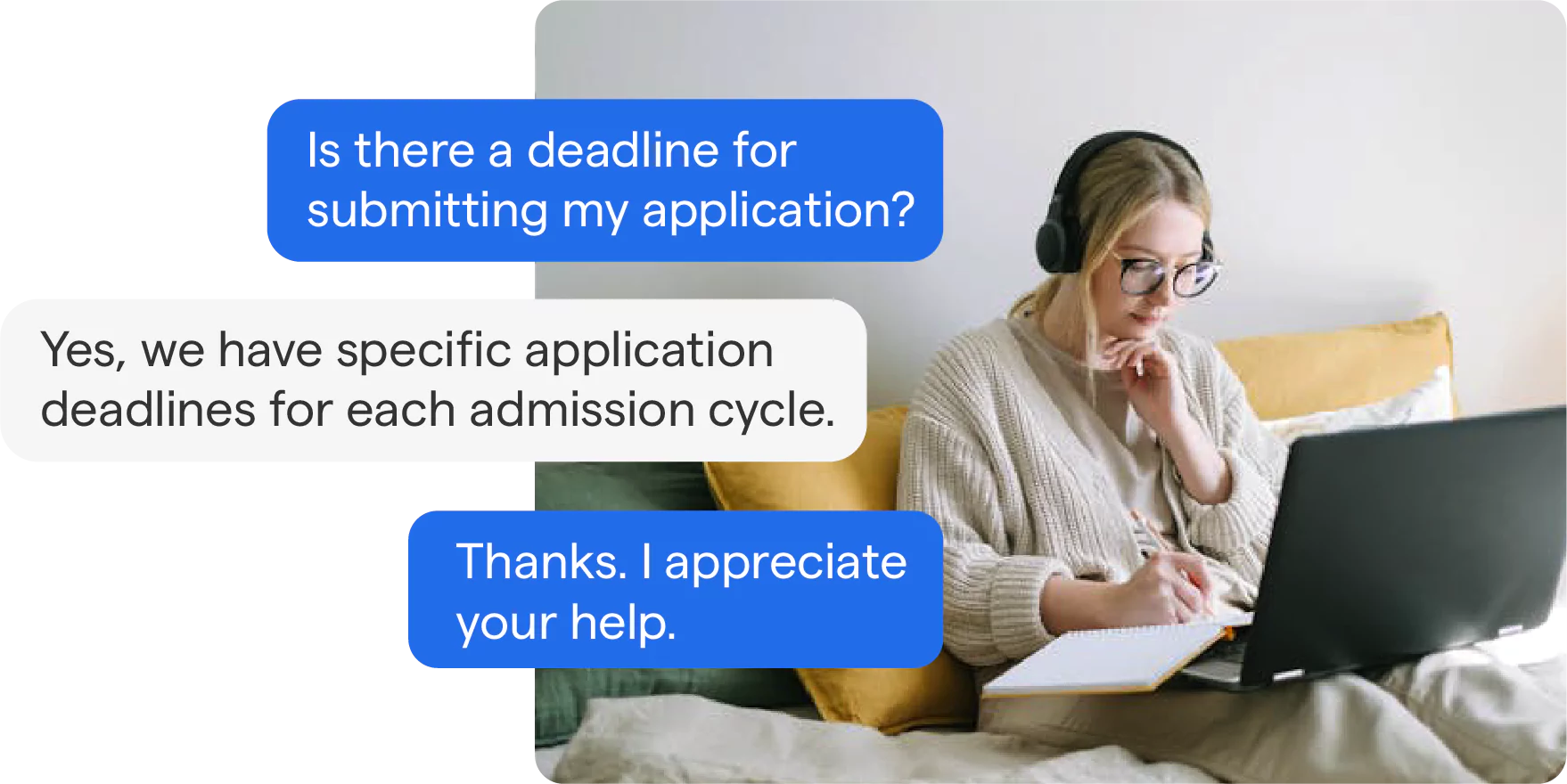
One major advantage of chatbots is their 24/7 availability. Students can ask questions and get answers anytime.
Whether it’s late at night or early in the morning, a chatbot for education is always ready to help. This constant support ensures that learning never stops, and students can study at their own pace.
Personalized Learning
Chatbots provide personalized learning experiences. They can tailor content to each student’s needs.
For instance, an AI chatbot for education can recommend specific resources based on a student's progress. This helps students learn more effectively by focusing on their weak areas.
Instant Feedback
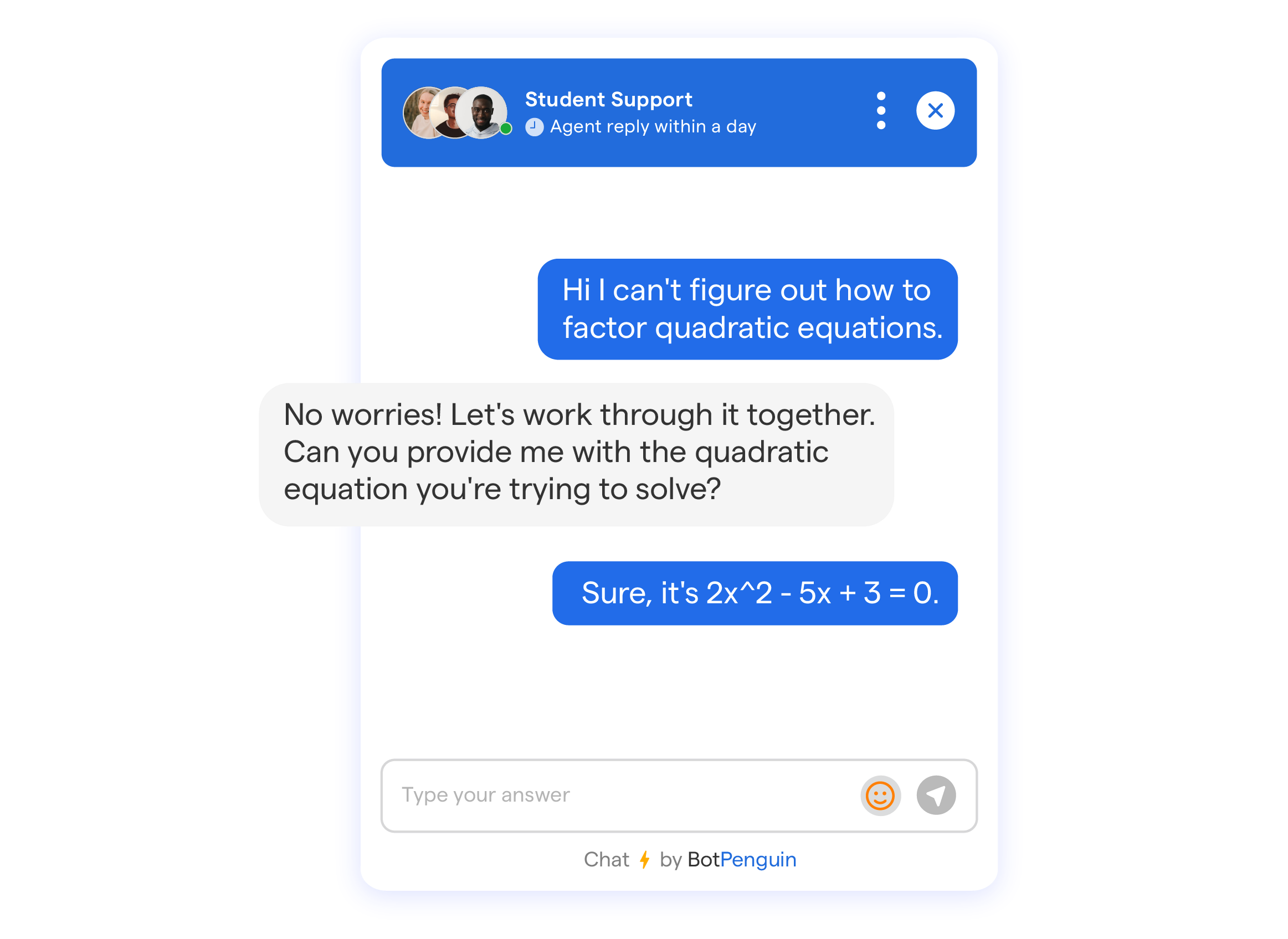
Getting quick feedback is crucial for effective learning. Chatbots can give instant feedback on quizzes and assignments.
This immediate response helps students understand their mistakes and learn from them right away. It’s like having a tutor who is always available to guide you.
Administrative Support
Chatbots can handle many administrative tasks. They can manage attendance, grade assignments, and send reminders about deadlines.
This support allows teachers to focus more on teaching rather than paperwork. A chatbot for educational institutions can streamline many processes, making the school run more smoothly.
Engaging Students
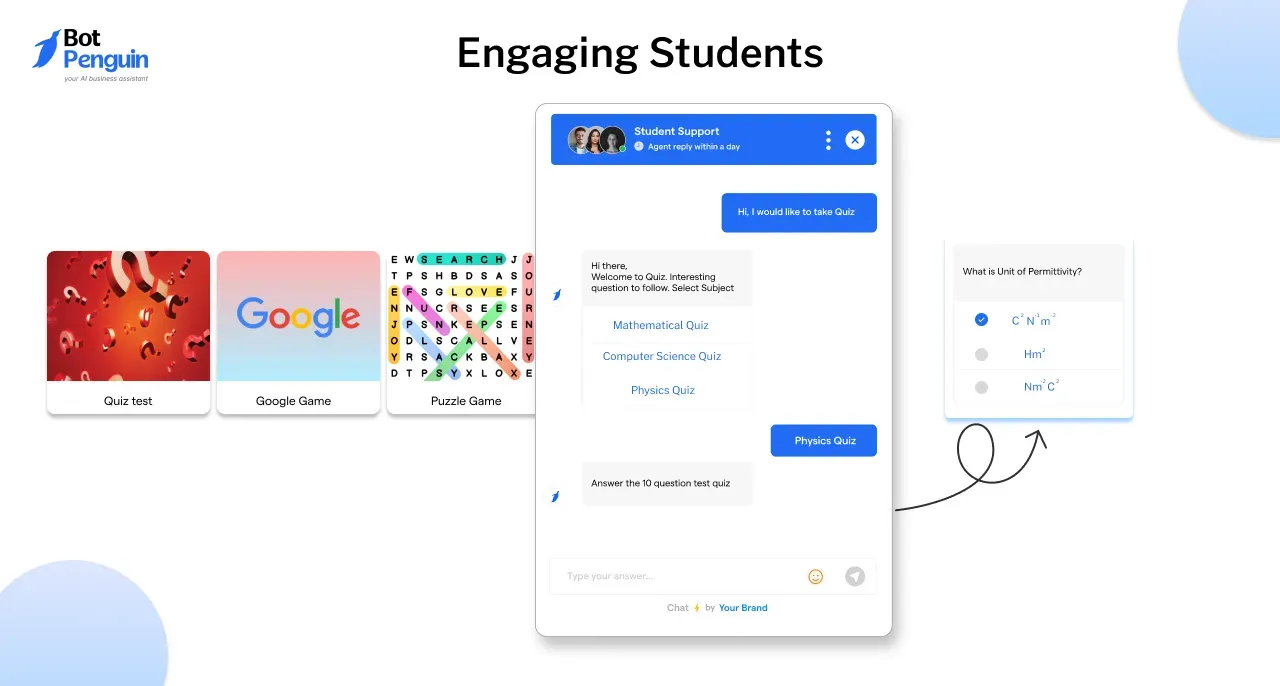
Keeping students engaged is key to effective learning. Chatbots make learning interactive and fun. They can use games, quizzes, and other activities to keep students interested.
Using a free chatbot for education, teachers can create a more dynamic and engaging classroom environment.
How Chatbots Help Students
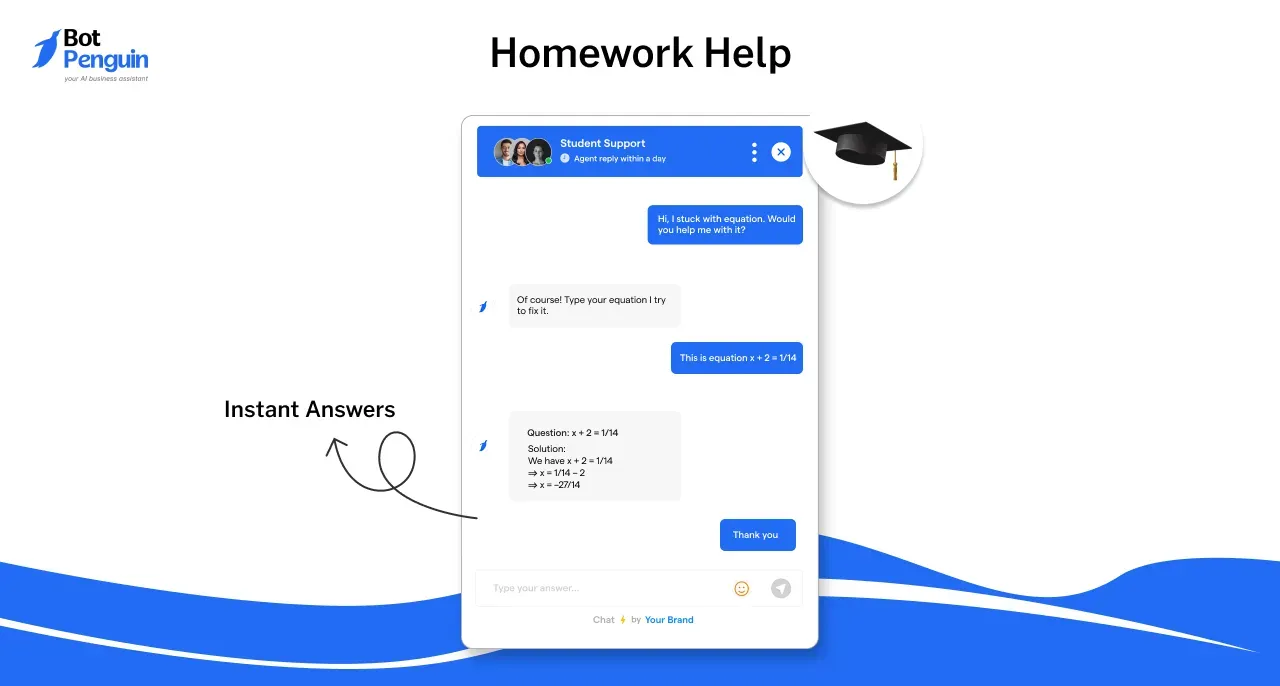
Chatbots are a great resource for students. They offer support and make learning more enjoyable.
Let's see how a chatbot for education can assist students in various ways.
Study Assistance
Chatbots provide valuable study assistance. They guide students through tough concepts and explain topics in simple terms.
An AI chatbot for education can suggest study materials based on what the student needs to focus on. This personalized guidance helps students learn more effectively.
Homework Help
When it comes to homework, chatbots are incredibly helpful. Students can ask a chatbot questions and get instant answers.
This immediate help can make homework less stressful and more manageable. A free chatbot for education can be a lifesaver when students are stuck on difficult problems.
Exam Preparation

Preparing for exams can be daunting, but chatbots make it easier. They offer practice quizzes, provide tips, and track progress.
By using a chatbot for educational institutions, students can review key concepts and get ready for tests in an interactive way. This continuous support helps build confidence and improve performance.
Language Learning
Learning a new language is challenging, but chatbots can help. They engage students in conversation, correct their grammar, and expand their vocabulary.
An AI chatbot for education can make language learning fun and interactive, which keeps students motivated. This constant practice is essential for mastering a new language.
How Chatbots Help Teachers
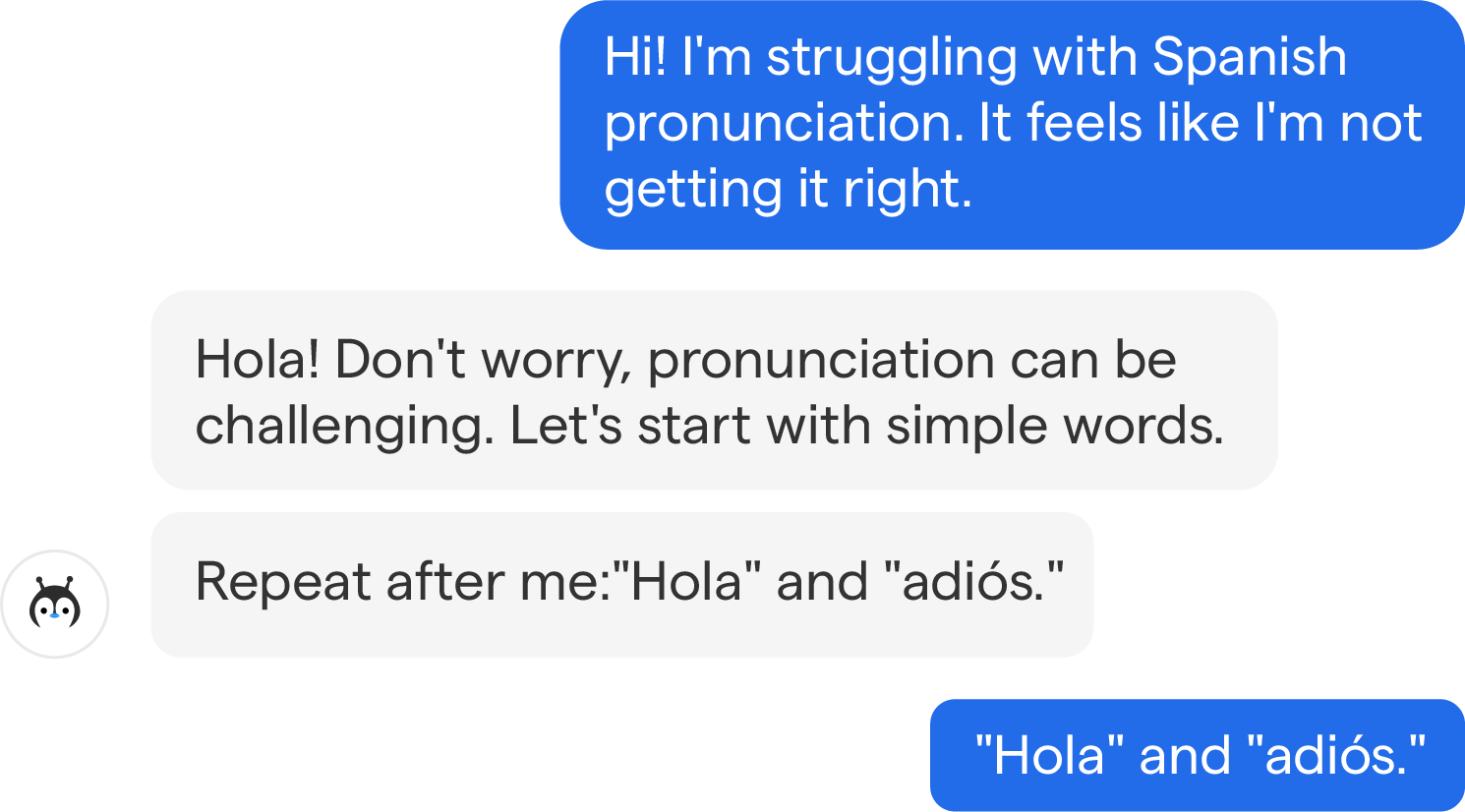
Chatbots aren't just helpful for students; they also offer significant benefits for teachers. They streamline many tasks and enhance the teaching experience.
Let's explore how a chatbot for education can support teachers in various ways.
Automating Repetitive Tasks
One major benefit of chatbots is their ability to automate repetitive tasks. They can handle attendance, grade assignments, and send reminders.
This automation saves teachers valuable time and reduces their workload. By using a chatbot for educational institutions, teachers can focus more on teaching and less on administrative duties.
Managing Student Inquiries
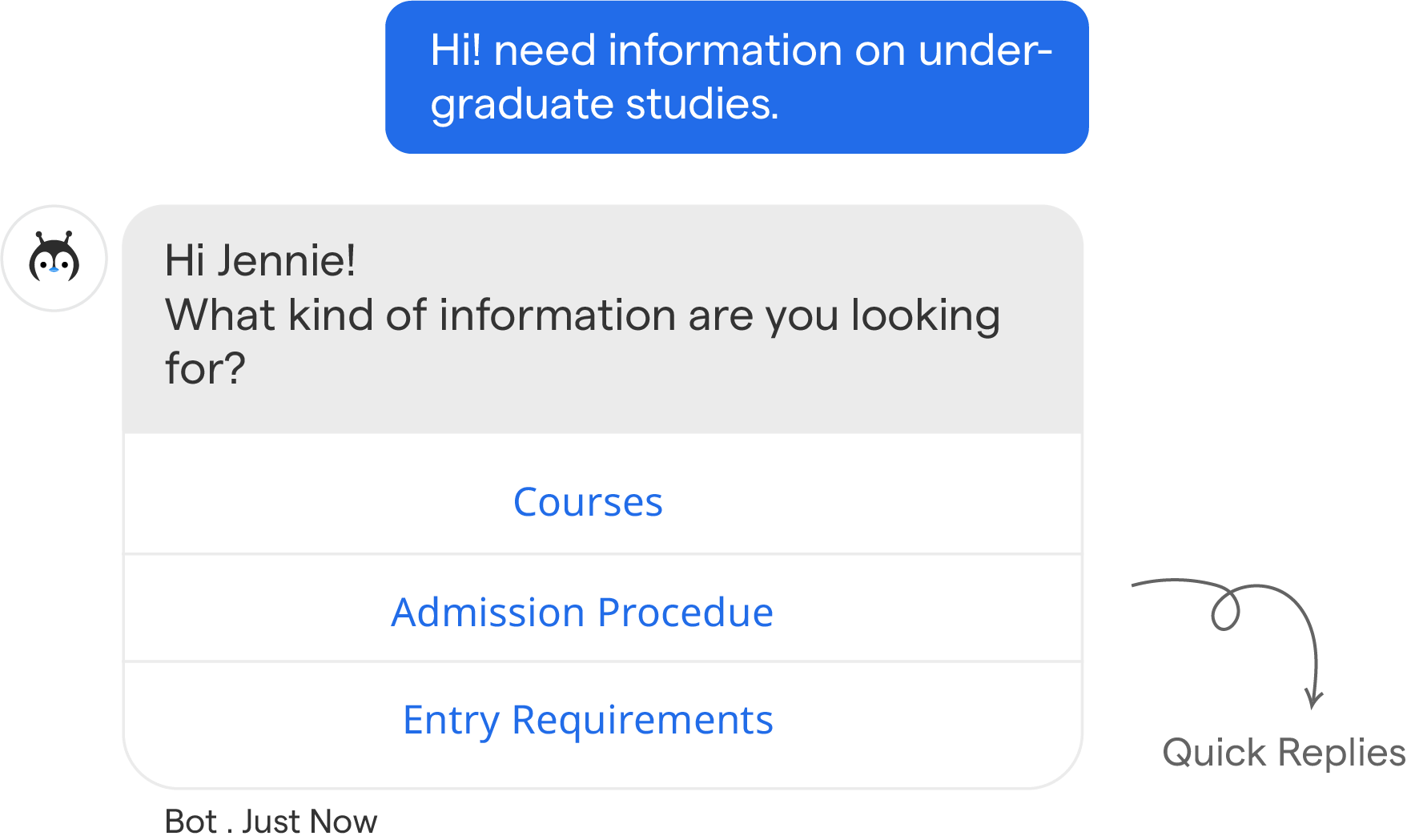
Chatbots can manage student inquiries efficiently. Students often have similar questions about assignments, schedules, and deadlines.
A free chatbot for education can answer these questions instantly. This reduces the number of emails and messages teachers need to respond to, allowing them to use their time more effectively.
Monitoring Student Progress
Chatbots help teachers monitor student progress in real-time. They can track students' performance on quizzes, assignments, and tests.
An AI chatbot for education can analyze this data and provide insights into each student's strengths and areas for improvement. This helps teachers tailor their instruction to meet individual student needs.
Providing Resources
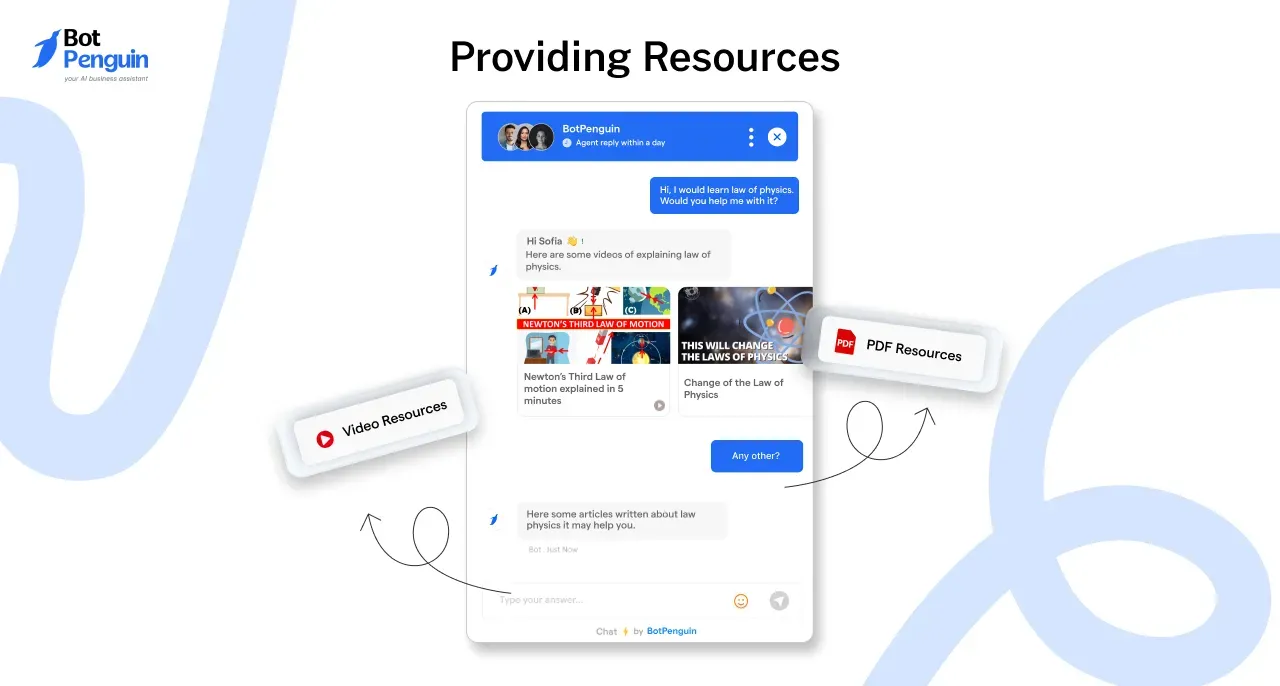
Chatbots can also provide valuable resources to both teachers and students. They can suggest articles, videos, and other learning materials based on the current lesson.
A chatbot for the education system can recommend resources that enhance the teaching process and support students' learning journeys.
Types of Educational Chatbots
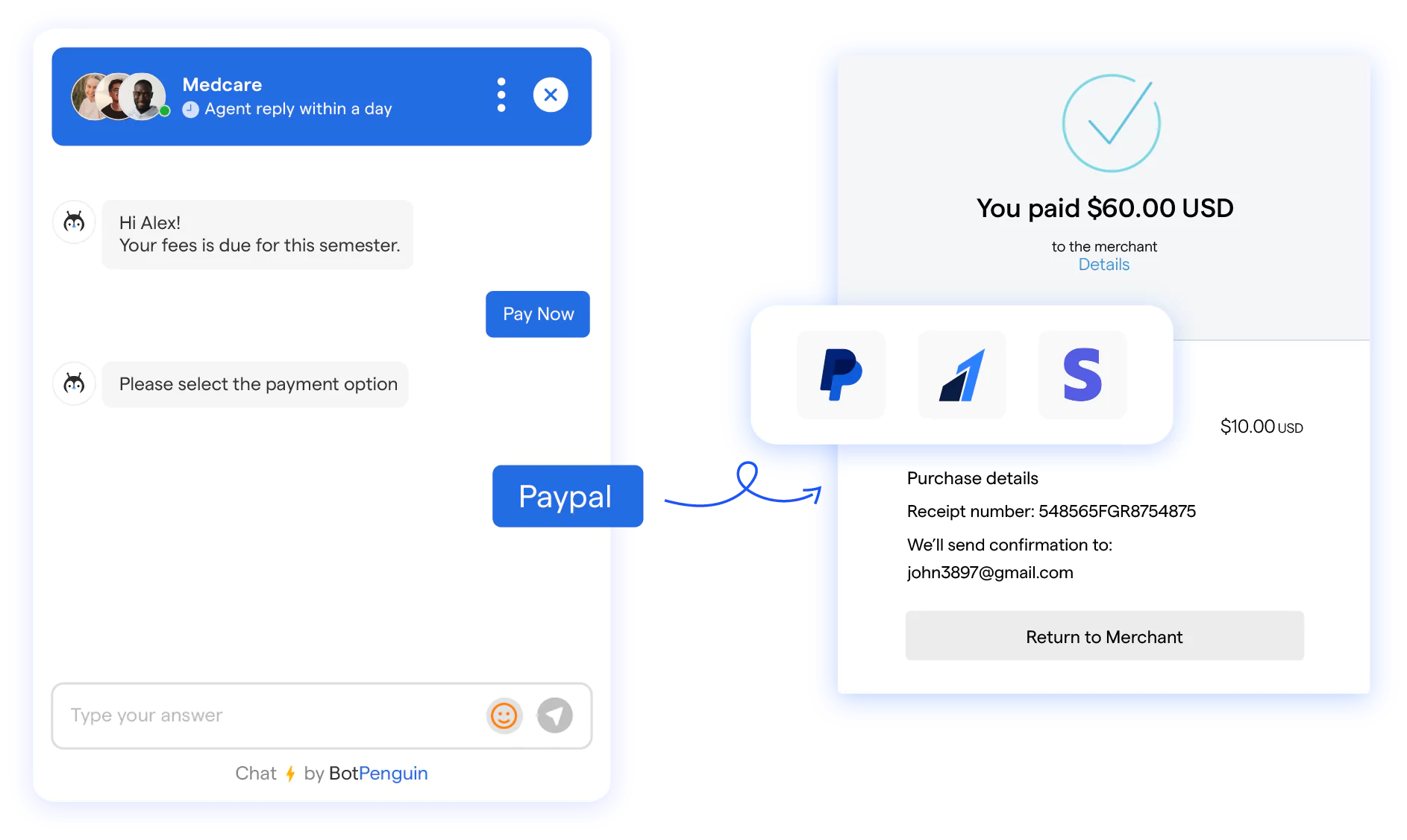
Chatbots are becoming a key part of modern education, offering various functions to support both students and teachers.
Let's dive into the different types of chatbot for education and how they can be utilized in schools.
Tutoring Chatbots
Tutoring chatbots are designed to help students understand and learn new concepts. They provide explanations, answer questions, and offer practice problems.
An AI chatbot for education can personalize learning by adapting to each student's pace and style. This makes studying more efficient and effective.
For example, these chatbots can offer extra help in subjects like math or science, making complex topics easier to grasp.
Administrative Chatbots
Administrative chatbots handle various administrative tasks, saving time for teachers and staff. They can manage schedules, send reminders, and keep track of attendance.
By using a chatbot for educational institutions, schools can streamline many of their processes. This allows teachers to focus more on their students and less on paperwork.
Administrative chatbots also help with organizing events and meetings, making school operations smoother.
Suggested Reading:
7 Reasons Why Chatbot for Education is the Future
Peer-to-Peer Learning Bots
Peer-to-peer learning bots facilitate collaboration among students. They connect students who need help with those who can provide it.
These chatbots create a supportive learning environment where students can learn from each other.
By promoting peer interaction, a free chatbot for education can enhance understanding and retention of material. It encourages students to work together, ask questions, and share knowledge.
Assessment Bots
Assessment bots assist with evaluating student performance. They can create quizzes, grade assignments, and provide instant feedback.
This helps teachers quickly identify areas where students need more support. An AI chatbot for education can analyze quiz results and suggest personalized study plans.
This continuous assessment keeps students on track and helps improve their academic performance.
Setting Up a Chatbot for Education with BotPenguin
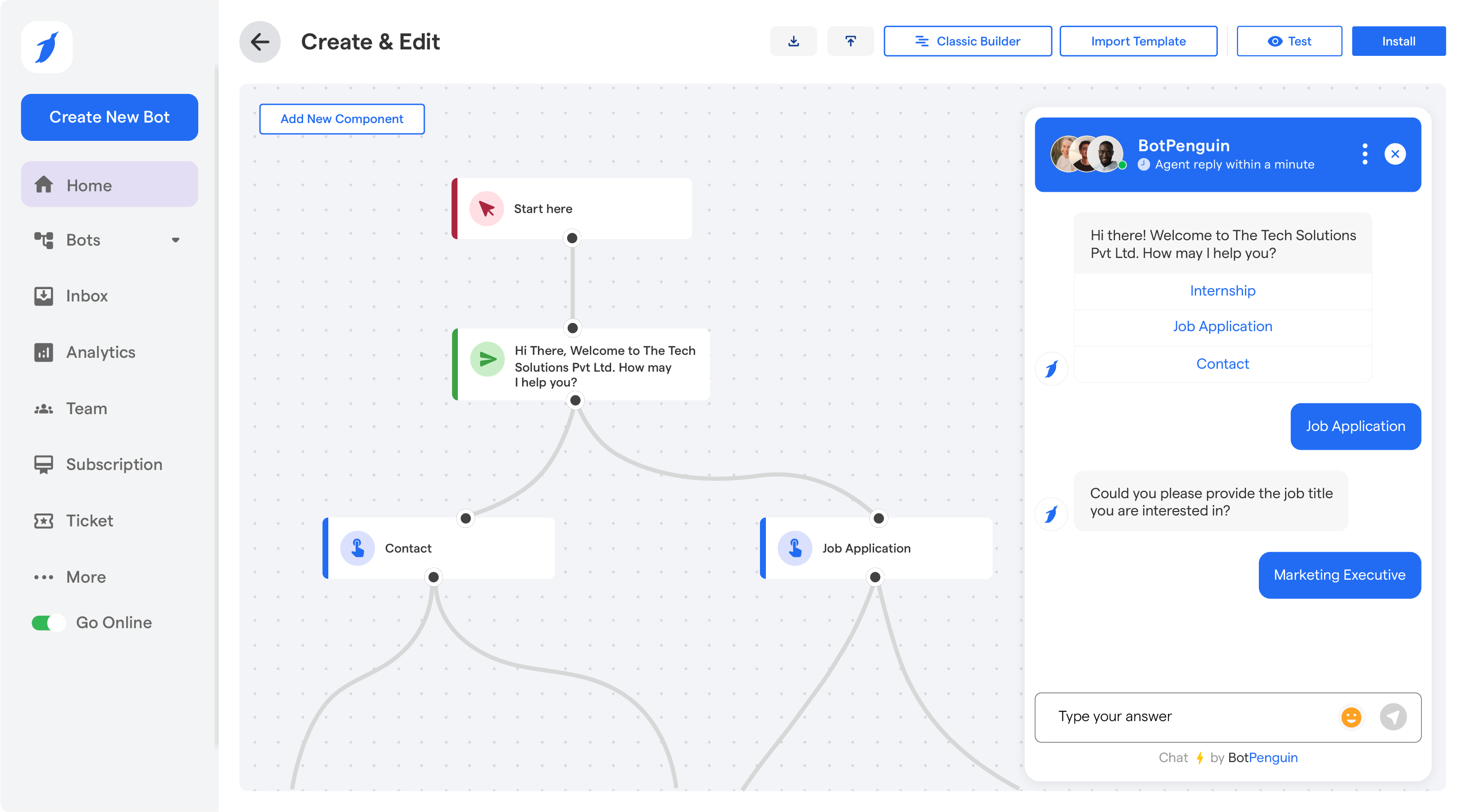
Creating a chatbot for education using BotPenguin is a straightforward process. This guide will take you through each step to get your chatbot up and running smoothly.
Whether you want to enhance student learning or streamline administrative tasks, this guide has you covered.
Sign Up for BotPenguin
Start by signing up for BotPenguin. Go to the BotPenguin website and create an account. It's quick and easy. You'll get access to all the tools you need to build your chatbot.
This step is essential as it opens the door to various features and customization options that BotPenguin offers.
Select the Platform
Next, choose the platform where you want your chatbot to operate. BotPenguin supports various platforms like websites, landing pages, mobile apps, WhatsApp, Facebook, and Telegram. Pick the one that best fits your needs.
This flexibility allows you to reach your audience where they are most active, ensuring better engagement and interaction.
Choose Chatbot Type: Rule-based or AI with ChatGPT
Before you start building, decide if you want a rule-based chatbot or an AI chatbot using ChatGPT integration. Rule-based chatbots follow set scripts and rules, which can be useful for straightforward queries and tasks.
AI chatbots for education with ChatGPT can understand and respond more naturally to user queries, providing a more interactive and intuitive experience. This choice depends on the complexity and nature of the tasks your chatbot will handle.
Customize Chatbot Appearance
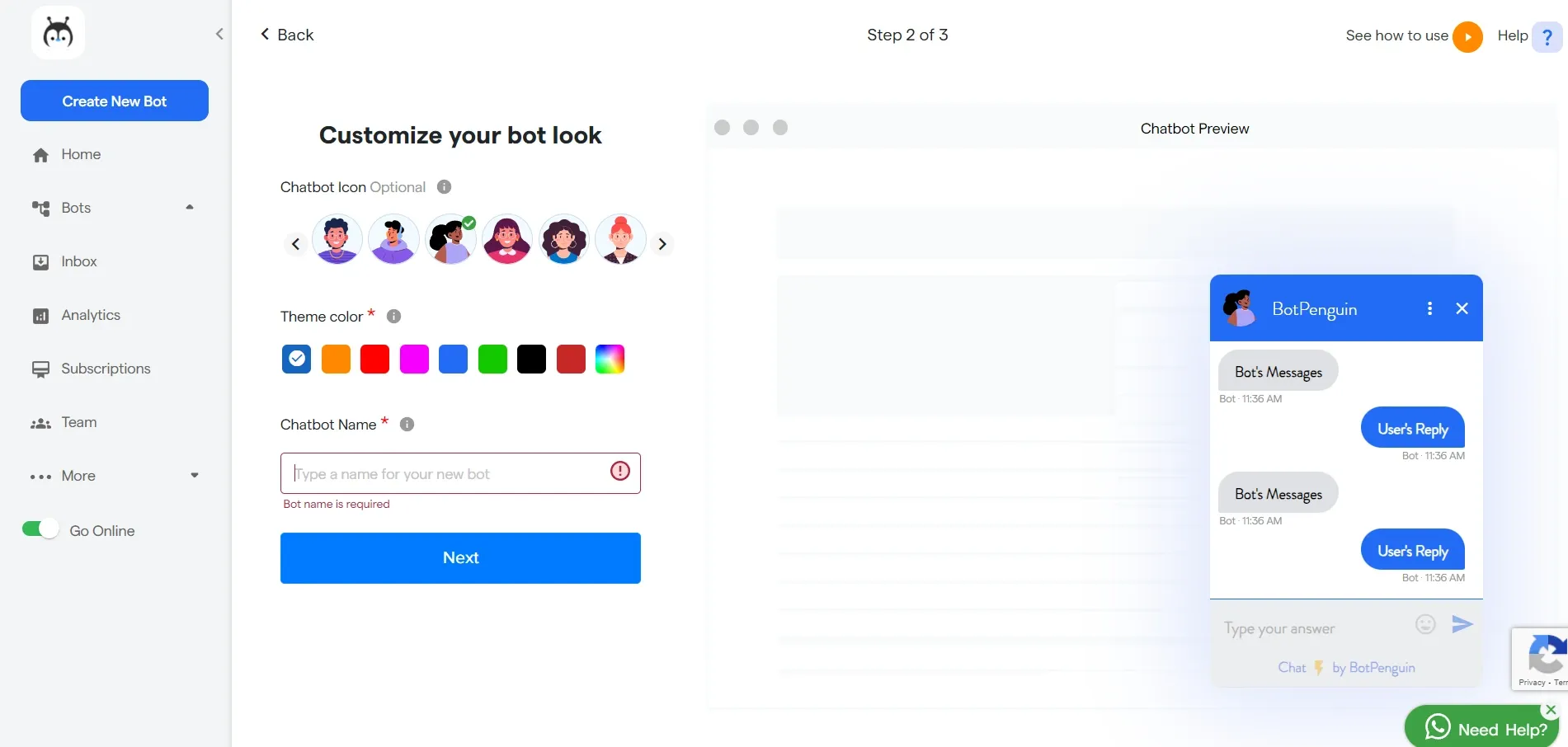
Make your chatbot look appealing. Customize its appearance to match your brand or school colors. You can choose the avatar, theme, and chat window style.
This helps make the chatbot engaging and user-friendly. An attractive and consistent appearance enhances user trust and engagement.
Name Your Chatbot
Give your chatbot a name. Pick something simple and memorable that reflects its purpose. A good name can make the chatbot more relatable and approachable for students and teachers.
It helps in creating a personal connection with the users, making them more likely to interact with it.
Provide Your Chatbot with a Database
Equip your chatbot with the necessary information. Provide a database that includes common questions and answers, study materials, or administrative details.
This ensures the chatbot can provide accurate and helpful responses. A well-fed database is crucial for the chatbot's efficiency and reliability.
Create Conversational Flow
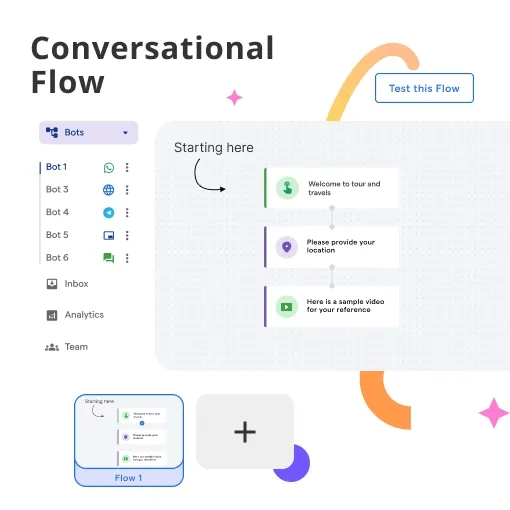
Design the conversational flow of your chatbot. Plan how interactions will unfold based on user inputs. Ensure that the chatbot can handle various queries related to education.
Keep the conversations clear and helpful. Consider different scenarios and create a flow that covers as many possible user interactions as you can think of. This planning phase is vital for creating a smooth and intuitive user experience.
Integrate with Other Tools
Enhance your chatbot’s functionality by integrating it with other tools. BotPenguin offers over 60 native integrations for automation, customer support, productivity, scheduling, and task management.
Choose the integrations that best support your educational needs. For instance, integrating with a learning management system can help in providing real-time updates about assignments and grades.
Install Your Chatbot
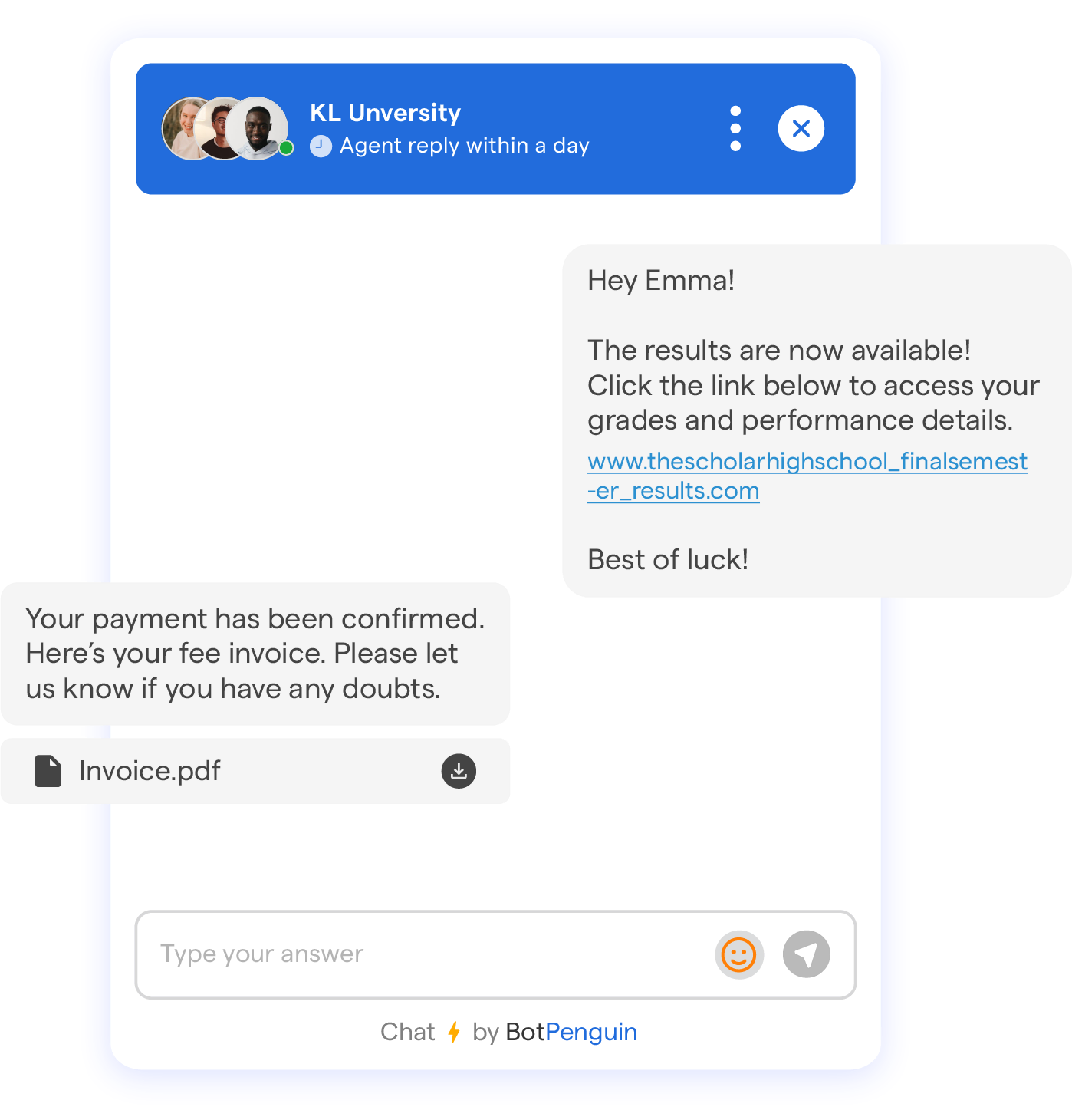
Now it's time to install your chatbot on your chosen platform. If it's for a website, BotPenguin supports various CMS options like WordPress, Wix, SquareSpace, or an embedded script.
Follow the instructions for seamless installation. Ensure that the installation process is complete and the chatbot is visible and accessible to your users.
Test and Refine
Before you launch, test your chatbot thoroughly. Check for any issues in the conversational flow or responses. Make necessary adjustments to improve accuracy and user experience.
Continuous refinement will ensure your chatbot for education system is always performing at its best. Testing is an ongoing process; regular updates and tweaks based on user feedback will keep your chatbot effective and relevant.
Best Practices for Using Chatbots in Education
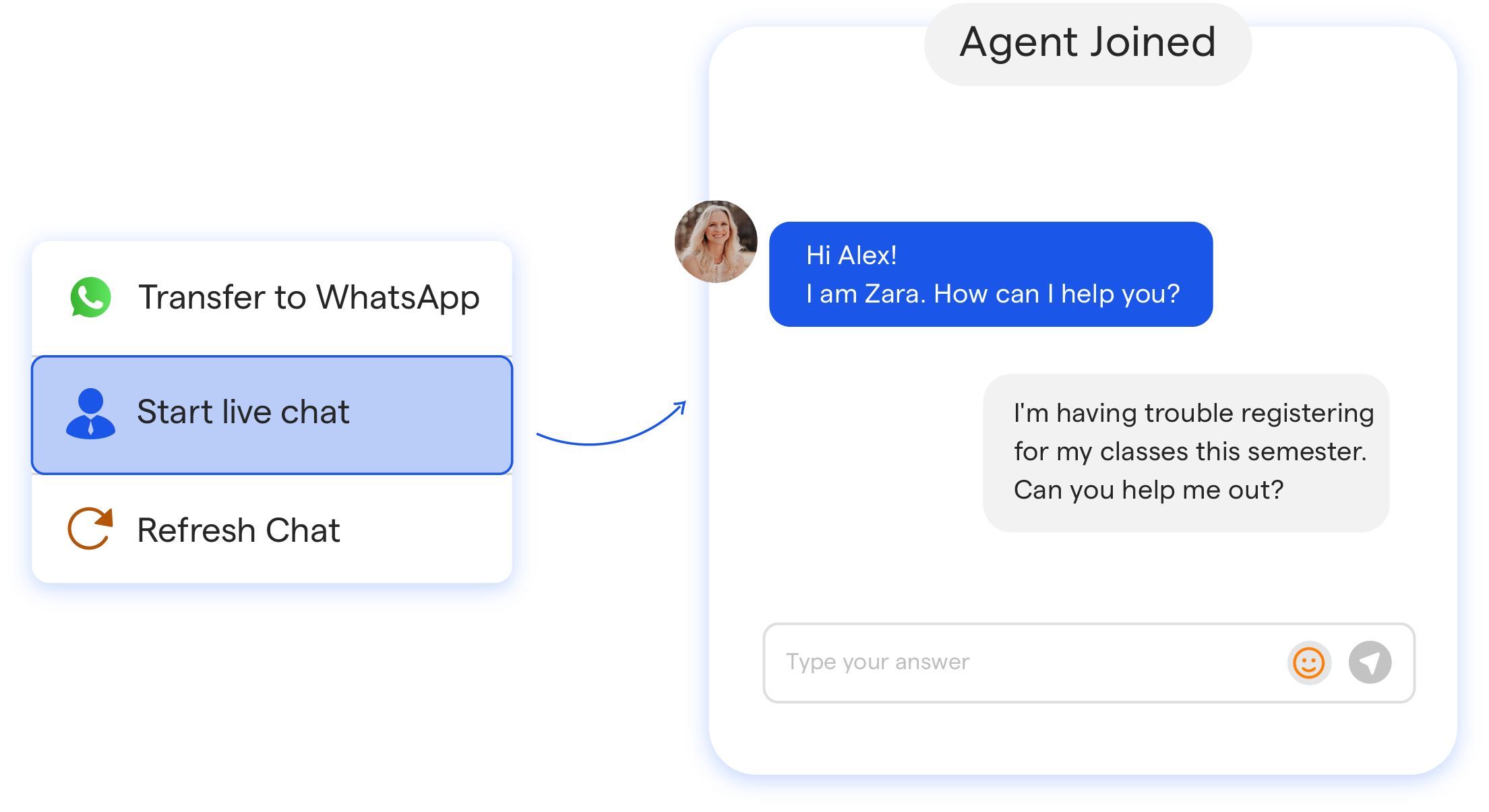
Using a chatbot for education can greatly benefit both students and teachers. To get the most out of this technology, it's important to follow some best practices.
Here are key tips for effectively using chatbots in education.
Keeping It Simple
Start with a simple design. Your chatbot should be easy to use and understand. Avoid complicated commands and technical jargon. Focus on clear and concise language.
This simplicity ensures that students and teachers can interact with the chatbot without any confusion. A free chatbot for education should provide straightforward answers and guidance.
Making It Interactive
An engaging chatbot for education keeps users interested. Make the chatbot interactive by including quizzes, games, and instant feedback. This interaction helps reinforce learning and makes studying more enjoyable.
AI chatbots for education can personalize interactions based on the user’s responses, making the experience more dynamic and engaging.
Suggested Reading:
5 Use Cases For An Education Chatbot
Ensuring Accessibility
Ensure your chatbot for education is accessible to everyone. It should work seamlessly on various devices like smartphones, tablets, and computers. Consider including features like text-to-speech for students with visual impairments.
A chatbot for educational institutions must be designed with inclusivity in mind to support all students, regardless of their abilities.
Maintaining Privacy and Security
Privacy and security are critical when using chatbot for education. Protect student data by following strict privacy policies.
Ensure that the chatbot complies with relevant regulations. Regularly update security measures to prevent data breaches. This is essential for maintaining trust and ensuring the safe use of a chatbot for the education system.
Challenges and Solutions
Using a chatbot for education brings many benefits, but it also comes with challenges.
Understanding these challenges and finding solutions can help maximize the effectiveness of chatbots in schools.
Challenge: Limited Understanding
One major challenge is that chatbot for education may not understand complex queries. This can frustrate users.
Solution: Use AI chatbots for education with advanced natural language processing. Regularly update the chatbot's database to improve its understanding and accuracy.
Challenge: Technical Issues
Technical glitches can disrupt the user experience and reduce trust in the chatbot.
Solution: Ensure regular maintenance and updates. Test the chatbot frequently to identify and fix issues. Providing a free chatbot for education with reliable technical support can also help users quickly resolve problems.
Challenge: Privacy Concerns
Protecting student data is crucial. Chatbot for education can sometimes mishandle sensitive information.
Solution: Implement strict privacy policies and security measures. Ensure compliance with relevant regulations. Regularly review and update security protocols to protect user data.
A chatbot for educational institutions must prioritize privacy to maintain user trust.
Challenge: Engagement
Keeping students engaged with a chatbot for education can be difficult.
Solution: Make the chatbot interactive and fun. Incorporate quizzes, games, and personalized feedback. An engaging chatbot for education system can enhance learning and maintain student interest.
Future of Chatbots in Education
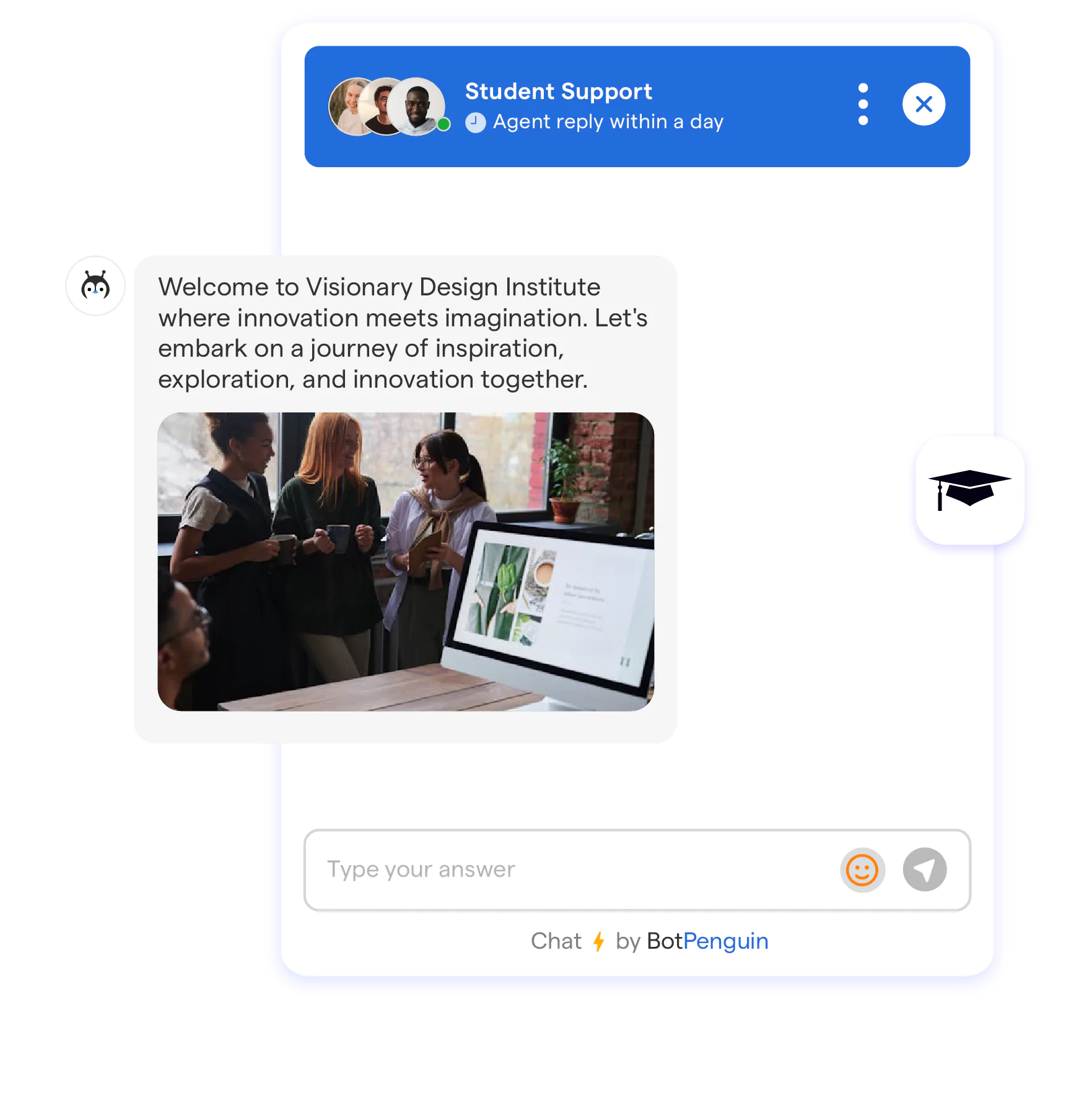
The future of chatbots in education looks promising with rapid advancements in technology. As these tools continue to evolve, they will play an even more significant role.
Let’s explore the emerging trends, integration of AI and machine learning, and potential developments in this field.
Emerging Trends
Emerging trends in chatbot for education include personalized learning experiences and enhanced engagement through interactive content.
According to recent studies, 70% of students find chatbots helpful for quick answers and personalized support. This trend indicates a growing acceptance and reliance on chatbots in learning environments.
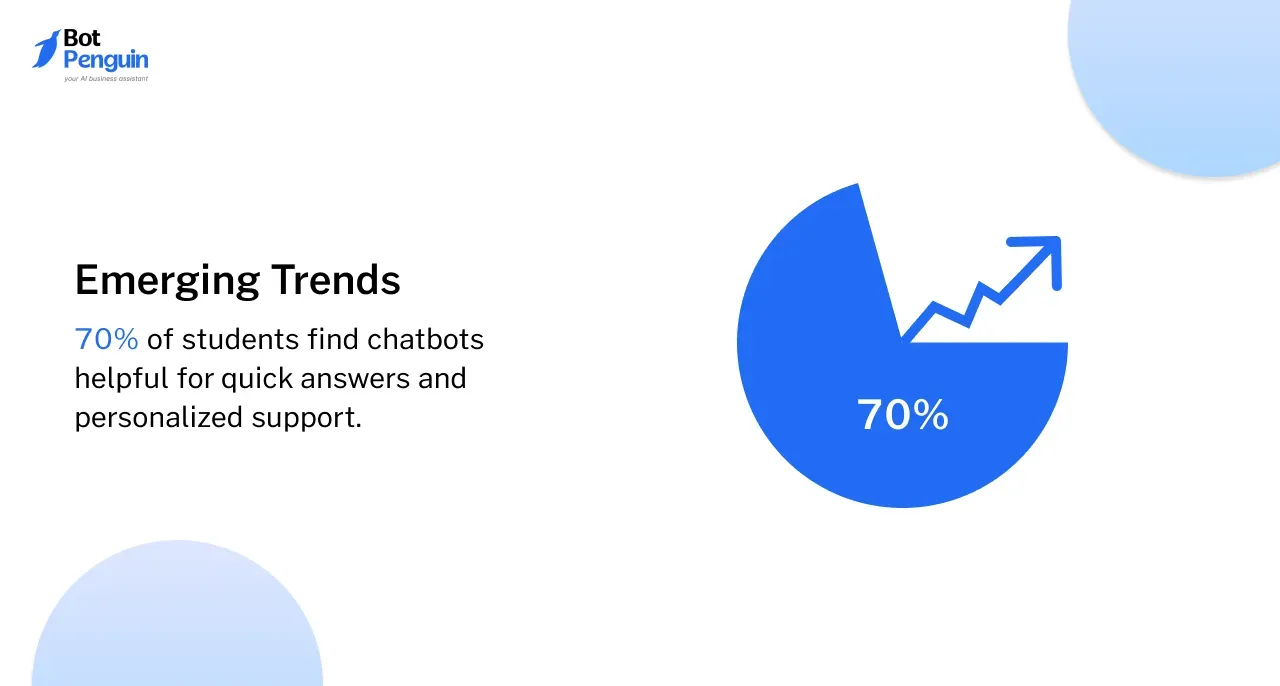
AI and Machine Learning Integration
The integration of AI and machine learning is transforming chatbots for educational institutions. These technologies enable chatbots to learn from interactions, improving their accuracy and relevance over time.
AI chatbots for education can analyze student performance data and provide tailored feedback, making learning more effective. With AI, chatbots can predict student needs and adapt to offer the best possible support.
Potential Developments
Potential developments in the chatbot for education system include more sophisticated natural language processing capabilities and increased interoperability with other educational technologies.
Future chatbot for education might offer real-time translation, making education accessible to a global audience. As AI and machine learning advance, chatbots will become more intuitive and capable of handling complex educational tasks.
Experts predict that by 2025, the global market for educational chatbots will reach $500 million, highlighting their growing impact.
Conclusion
Chatbot for education provide personalized support, streamline administrative tasks, and engage students in new and interactive ways.
From helping with homework to managing student inquiries, a chatbot for education can significantly enhance the learning experience.
Furthermore, a survey conducted by Clutch (2023) revealed that 62% of educational institutions have already implemented chatbot for education systems, with an additional 28% planning to do so within the next year.
Implementing a chatbot for educational institutions can address many challenges faced in traditional education systems. As we embrace these emerging technologies, the potential for a more accessible, efficient, and personalized education becomes a reality.
Whether you're looking for a free chatbot for education or a sophisticated AI chatbot for education, the possibilities are endless. Embrace the future of education with chatbots and transform the way we teach and learn.
Frequently Asked Questions(FAQs)
What are the benefits of using a chatbot for education?
Chatbots offer 24/7 support, personalized learning, instant feedback, and administrative help.
They engage students, streamline tasks for teachers, and provide quick, accurate answers to common questions, enhancing the overall educational experience.
How do chatbots support personalized learning?
Chatbots tailor their responses and resources to individual student needs, track progress, and offer customized feedback.
They adapt to each learner’s pace, ensuring a more effective and engaging educational experience.
Can chatbots handle complex educational queries?
Yes, especially AI-powered chatbots. They use natural language processing to understand and respond to complex questions, providing detailed explanations and resources.
Continuous updates improve their accuracy and relevance over time.
Are chatbots safe to use in education?
Yes, chatbots designed for education adhere to strict privacy policies and security measures.
They ensure student data is protected and comply with relevant regulations, maintaining a secure environment for users.
What platforms can educational chatbots be integrated with?
Educational chatbot for education can be integrated with websites, mobile apps, WhatsApp, Facebook, Telegram, and various CMS platforms like WordPress, Wix, and SquareSpace. This flexibility ensures they can reach users on their preferred platforms.
How can teachers benefit from using chatbots?
Teachers benefit by automating repetitive tasks, managing student inquiries, monitoring progress, and providing resources.
This allows them to focus more on teaching and less on administrative duties, enhancing their overall efficiency.



